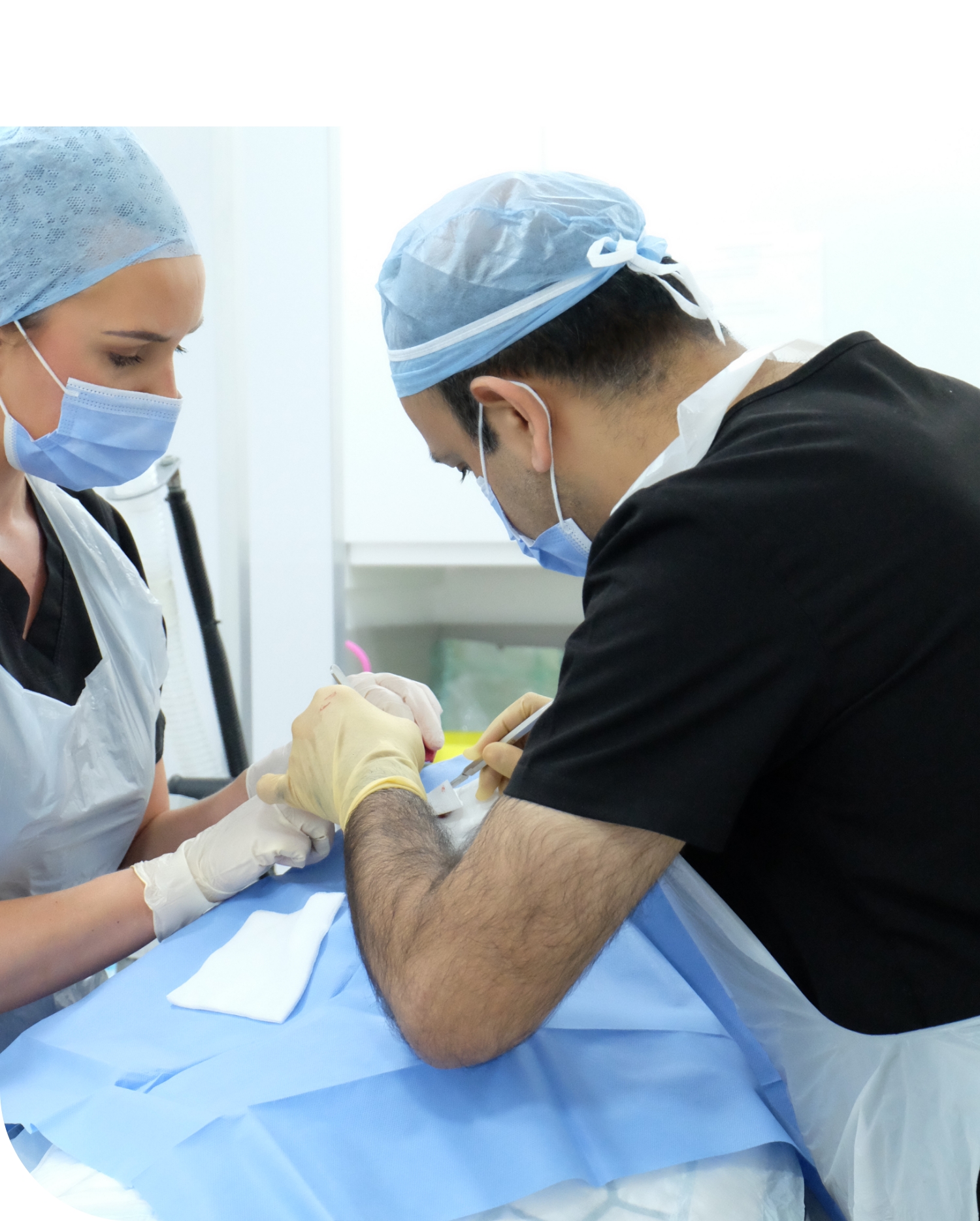What is Mohs
micrographic surgery?
Mohs micrographic surgery is a highly specialised, state-of-the-art technique used for the treatment of complex skin cancers, named after Dr Frederic Mohs, who developed the procedure in the 1930s at the University of Wisconsin.

About the surgery
The procedure differs from routine surgical excision as the removed tissue is carefully mapped, colour-coded and examined microscopically by Dr Aslam on the day of surgery. The peripheral and deep margins are examined to ensure the tumour has been completely removed - if any section of the tissue shows presence of cancer cells, another thin layer of tissue from the precise area is removed until it is cleared. The wound is then reconstructed.
While others may perform Mohs surgery, not all providers are fellows of the world leading American College of Mohs Surgery. Dr Aslam is a registered specialist dermatologist in the UK, Australia and New Zealand.
By choosing a double fellowship-trained and UK expert in Mohs surgery you can be assured that you will receive the highest standard of quality and competency as well as an optimal outcome.

The tissue sections are processed by a laboratory technician and then examined by Dr Aslam, who thoroughly looks for evidence of remaining cancer cells. It takes approximately 60 minutes to process, stain and examine a tissue section. During this time, your wound will be bandaged and you will return to the waiting area.
This selective removal of the tumour allows Dr Aslam to preserve most of the surrounding tissue.
Dr. Aslam may use stitches or a skin graft or flap may be designed. Sometimes a wound may be allowed to heal naturally. In certain circumstances, you may be referred to a plastic, oculoplastic, or ear, nose and throat surgeon for the reconstruction.
How to prepare
Because it is difficult to predict how long your Mohs surgery will take, it is best to leave your schedule open. You will be tired after the procedure and not feel up to activities that evening. We want you to REST after your procedure, as activity of any kind (even an easy walk) can increase your risk of complications, such as bleeding and pain.
Bring a book, your phone, a newspaper or your tablet. There are periods of waiting whilst Dr Aslam analyses your skin under the microscope. Light snacks and beverages will be available however, you may prefer to bring your own.
A driver isn’t an absolute necessity but is definitely preferred. The only time we require a driver is if your skin cancer is located near your eye or if you are taking sedating medication. You can also let your companion drive home while you relax and start the healing process.
Most patients will have a pressure bandage that remains in place without getting wet for 48 hours. Showering before surgery has also been shown to reduce the risk of infection and will make you feel better.
You will be swollen, possibly bruised, and will have a large bandage. More than anything you will be tired. If possible, consider taking extra time off from work especially if you have a physically-demanding job.
You will be lying down for the procedure. Being comfortable is key to feeling as relaxed as possible. Wear clothing that is loose around the neck and is buttoned up so you don't have to pull it over your head. Do not wear makeup or jewellery.
This includes blood thinners (Aspirin, Clopidogrel, Warfarin, Apixaban, Edoxaban and Rivaroxaban) unless you are instructed by Dr Aslam or your GP to discontinue them. If you need an afternoon or early evening dose, bring them with you, just to be safe.
Full healing of your surgical site will take up to 6-12 months. While our goal is to make your surgical site hard to notice from conversational distance, it will be very prominent in the days to weeks immediately after your procedure.
Upon completion of your procedure, Dr Aslam and his nursing staff will review your discharge instructions in detail. This will include options for pain control, appropriate wound care, and signs of potential complications. Repairs using flaps or grafts may require multiple follow-up visits to ensure proper healing.